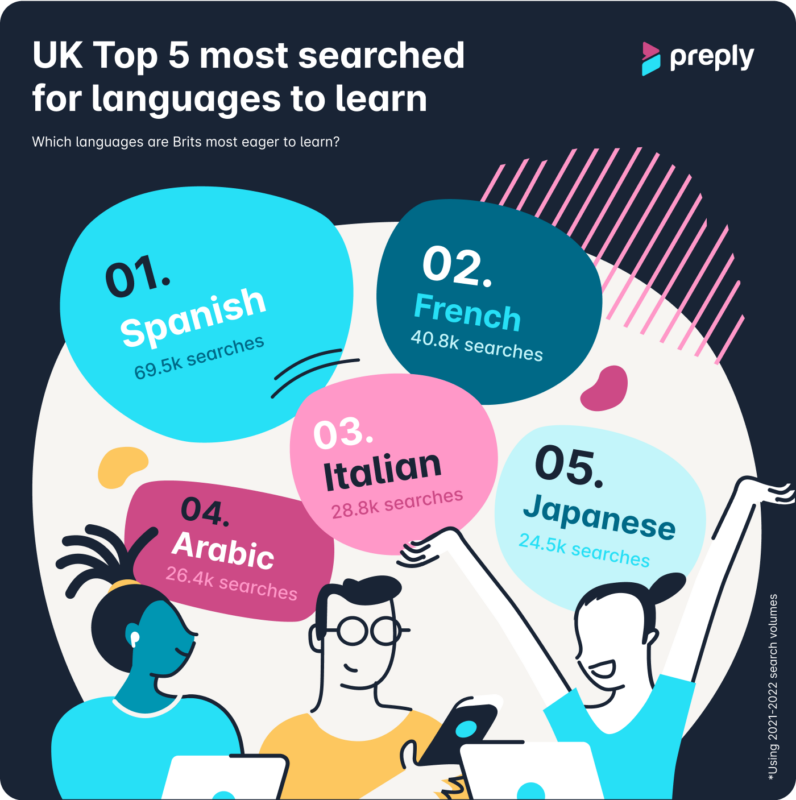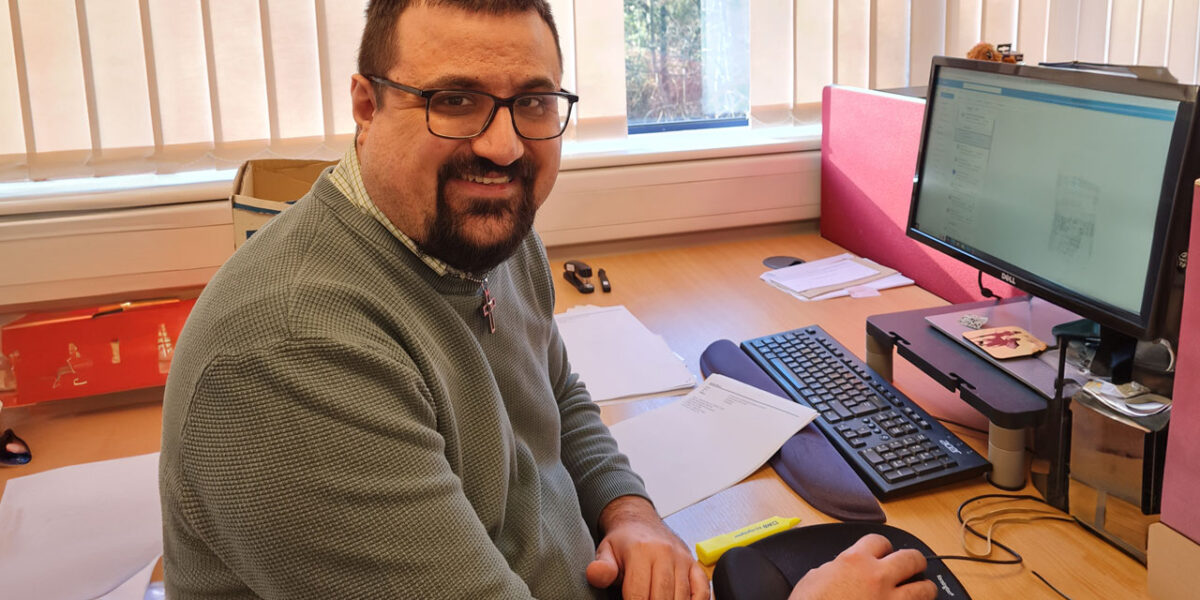New study reveals UK ‘hubs’ set to raise next multilingual generation

Global learning platform Preply takes a look at some of the most nurturing factors to encourage multilingualism, revealing the UK hubs set to raise the next multilingual generation.
Over half of the world’s population can speak more than one language, with 43% classifying as bilingual and a further 17% identifying as multilingual. Although a respectable one-third of Brits (36%) speak more than one language, the world’s topmost bilingual nation is Indonesia, where ¾ of the population speak a second language.
Taking over 110 UK towns and cities, Preply’s latest research reveals the UK ‘hubs’ set to raise the next multilingual generation. The study considers bilingual/international schools, the demand for learning a language and the size of the bilingual community (bilingual population), to reveal the country’s top locations for nurturing multilingualism in children.
Ranking as the UK’s top ten are…
Cambridge
Reading
Ipswich
Manchester
London
Oxford
Bristol
Derby / Leicester (joint 8th)
Nottingham
Edinburgh / Exeter (joint 10th)
Cambridge takes the crown and London fails to make the top three, placing in a respectable fifth place, whilst Reading and Ipswich complete the top three. Completing the UK top ten are Manchester, Oxford, Bristol, Derby and Leicester (joint eighth), Nottingham and finally Edinburgh and Exeter in joint tenth.
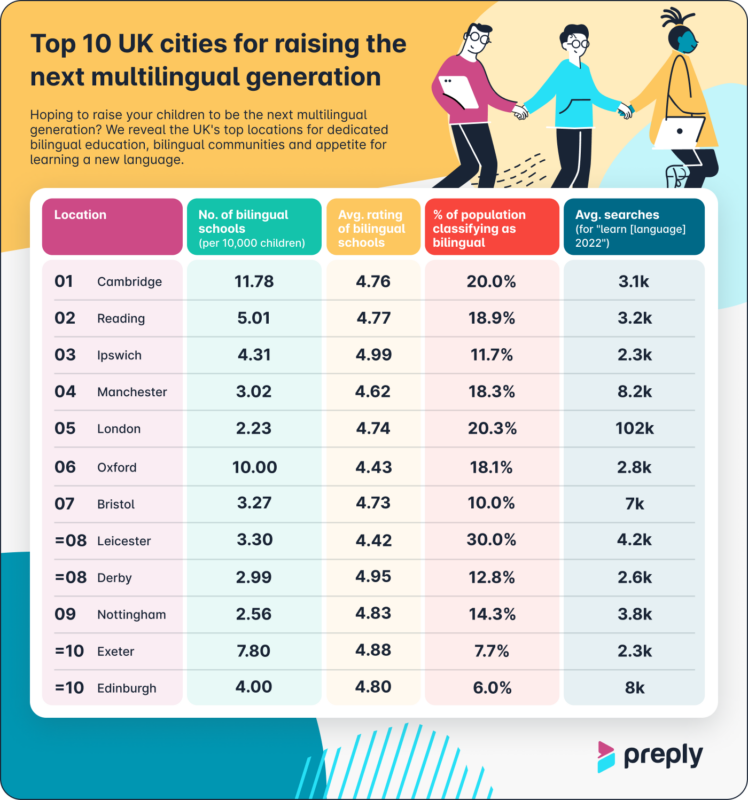
Cambridge’s top ranking is due to its wealth of great bilingual schools and a keen interest in learning a new language. The city boasts 11.78 independent bilingual schools per 10,000 children, which have one of the highest collective ratings in the UK (4.78). When learning a language, at-home support and development are indispensable, so parents and guardians can also help when learning too. In 2022, Cambridge registered 3000+ searches for “learn X” (across various languages).
A strong bilingual community is also essential, and Cambridge has the UK’s third largest, with 20% of its residents speaking a second language. The cities’ bilingual community is beaten only by London and Leicester.
Placing second is Reading, thanks to its rich bilingual community. Almost ⅕ of the population (18.9%) identify as bilingual, awarding Reading the fourth largest bilingual community in the UK. As for appetite for learning a new language, in 2022, residents racked up more than 3200 searches for “learn X”. Finally, the city counts a respectable five bilingual schools (per 10,000 children) with an average rating of 4.77.
Rounding off the podium is Suffolk-based Ipswich, offering fewer bilingual schools (3.27) but these do register the country’s second-best rating, a near-perfect 4.99. Annual demand for learning a language hovered around the 2300 mark last year. Its bilingual community is among the top twenty strongest in the UK, with 11.7% of its population classifying as bilingual.
As for the nation’s capital…
London is no longer home to the largest bilingual community (per capita), having been dethroned by Leicester. Just over 20% of the population in the capital currently identify as bilingual, whilst a sizeable one-third of Leicester’s population (30%) register as being fluent in more than one language.
However, Londoners do lead the way when it comes to demand for learning a new language, racking up over 100,000 online searches for “Learn X” in 2022. London’s biggest downfall is its poor bilingual school-to-child population ratio, offering only 2.23 bilingual schools per 10,000 children.
In the capital, the boroughs with the best prospects for those wishing to further nurture their children’s knack for languages are Haringey, Harrow, and Tower Hamlets in joint second and finally Westminster and Barnet in joint third. The capital’s worst-off boroughs are Waltham Forest, Croydon and Bromley.
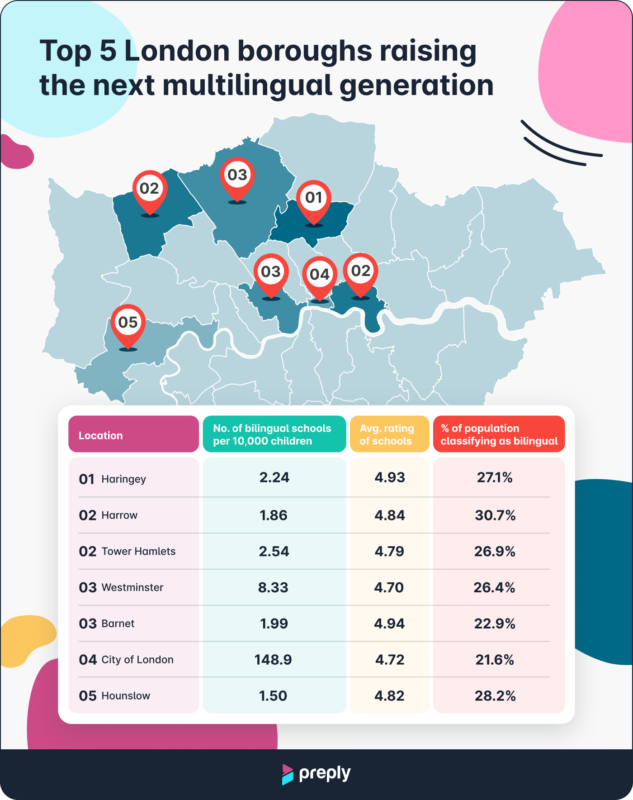
Locations leading the way for Sign Language Fluency
When looking at bilingual population data, this includes those who are proficient in British Sign Language. Leading the way towards a more inclusive future for the deaf community, the UK’s largest BSL-speaking communities are found in Gloucester, where 0.09% of the population are proficient in BSL, followed by Barnsley (0.08%) and Bournemouth (0.07%). The smallest being found in Cambridge and Bangor (0.01%).
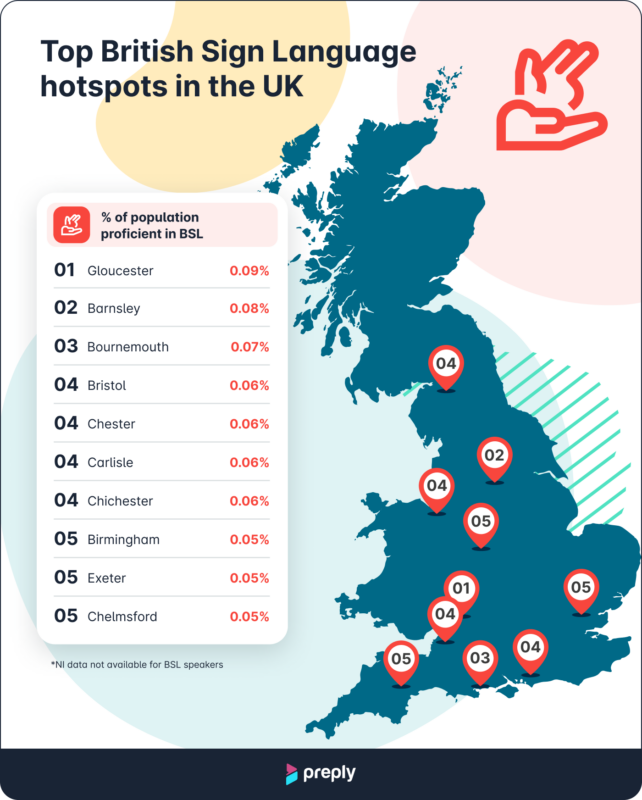
The UK’s most-wanted languages
The study also goes on to reveal which languages are most in demand in the UK and in each town/city. In the UK, Brits are looking to learn Spanish most of all, with the entire country making just under 70,000 searches for “Learn Spanish”. French and Italian follow is second and third, whilst Arabic and Japanese complete the top five, respectively.
